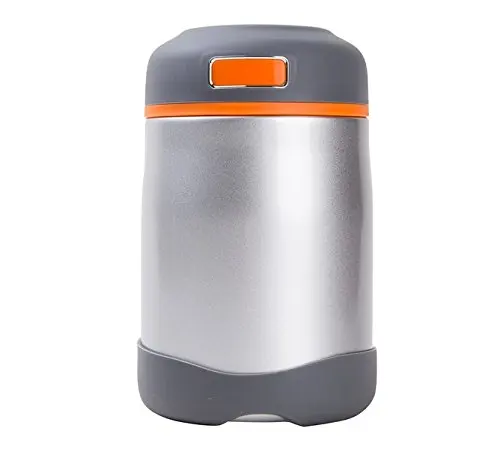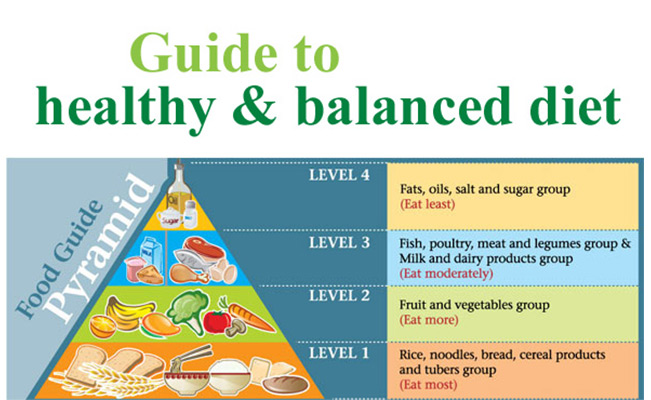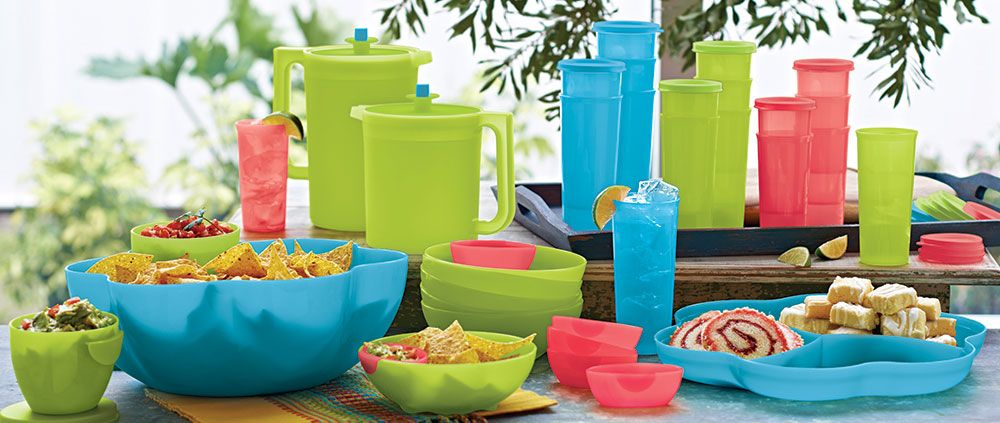Feeding baby blue birds
Feeding Bluebirds
Bluebird Feeding 101
During the warmer months of the year (May through October), Bluebirds can usually find enough food to survive without any problems. However, under harsh conditions such as prolonged period of chilly, wet weather, or snow & cold, or when ice coats most of the wild berries, bluebirds will benefit from receiving feeder food. Meal worms, suet, sunflower hearts, softened fruits, and cornmeal muffins can all be fed to bluebirds. Most of these will be accepted during the cold weather months if bluebirds have wintered over. But, meal worms are the best food to feed bluebirds and they will readily eat them year-round. During the breeding season, it is nice to feed meal worms because the harried parents will gratefully accept them to help feed their ravenous young. Basically, it acts as a supplement to the natural insect diet bluebirds feed their young.
NOTE: supplemental feeding can make a HUGE difference to Bluebirds and their young during periods in the Spring when rain and cool weather persists over multiple days. Bluebirds will have a hard time feeding their young when cool, wet conditions persist. If this happens, adults will stop feeding their young and focus on their own survival. So, you can help Bluebirds survive by feeding meal worms and even scrambled eggs. See below for details.
Meal Worms
Meal worms can be purchased at some bait shops, pet stores or bird supply stores. To order larger quantities, it is usually more economical to purchase meal worms online.
Meal worms are the larval stage of darkling beetles. Put a bedding of cornmeal or wheat bran into a plastic rectangular container with holes drilled or punched in the top for ventilation. Add a piece of apple, carrot or potato for moisture. If you have a large amount of meal worms that you won't use right away, put the container in the refrigerator to keep them dormant so they don't turn into adult beetles.
Meal worms can be served up in any type of shallow dish or container with smooth sides, so the meal worms can't escape. The feeding dish MUST BE made of either glass, plastic, metal, or ceramic because meal worms can crawl out of anything with rough sides (like wood). The problem is once other birds find the mealies (e.g. robins) they'll be gone in a flash. Meal worm feeders can be purchased at many bird supply stores. Some feeders have entrance holes which require birds to enter the feeder to get at the meal worms. This will discourage non-cavity nesting birds that are larger than bluebirds from eating up all the worms - after all, insects are popular with most birds!
The feeding dish MUST BE made of either glass, plastic, metal, or ceramic because meal worms can crawl out of anything with rough sides (like wood). The problem is once other birds find the mealies (e.g. robins) they'll be gone in a flash. Meal worm feeders can be purchased at many bird supply stores. Some feeders have entrance holes which require birds to enter the feeder to get at the meal worms. This will discourage non-cavity nesting birds that are larger than bluebirds from eating up all the worms - after all, insects are popular with most birds!
Another meal worm feeding tip is to "train" the birds to find the meal worms in the same place, at the same time every day. The Bluebirds will figure this out quickly, and be waiting for you each day when you bring the worms out. Our experience has shown that early morning is the best time. Bluebirds are hungry then, other insects may not be active yet, and competition from other birds is less.
For more information on feeding meal worms, Click Here to download the North American Bluebird Society's factsheet on Meal worms.
Online sources for meal worms:
Rainbow
http://www.rainbowmealworms.net/
Nature's Way
http://www.thenaturesway.com
BestNest
http://www.bestnest.com/bestnest/mealworms.asp
Scrambled Eggs
As previously stated, under severe conditions of cold and wet weather, bluebirds can be fed scrambled eggs. They will readily accept them and feed them to their young. Kurt Hagemeister of the Michigan Bluebird Society reports that this tactic saved a nest of young bluebirds several years ago in his yard. The eggs should be cooked as normal, scrambled, let cool, and then put out in a tray type of birdfeeder not far from the nest. If the birds don't eat them within a day or two, remove them from the area so they don't go bad or attract unwanted predators.
Suet
Bluebirds will sometimes feed on suet. Since insects are plentiful in the summer, it will be difficult to get them to eat suet at that time of year. But as the weather gets cold and insects are scarce or non-existent, they will really eat up the nutritious and energy-filled suet that you provide for them. Commercially made suet cakes are easy and relatively inexpensive. Cakes with hulled sunflower, peanut bits, raisins, and ground up corn meal are very good.
But as the weather gets cold and insects are scarce or non-existent, they will really eat up the nutritious and energy-filled suet that you provide for them. Commercially made suet cakes are easy and relatively inexpensive. Cakes with hulled sunflower, peanut bits, raisins, and ground up corn meal are very good.
Here is a great recipe that you can make to attract bluebirds:
Bluebird Suet Recipe
1 cup lard
1 cup crunchy peanut butter
1/3 cup sugar
1 cup whole wheat flour
2 cups oatmeal
2 cups cornmeal
1 ½ cup raisins
Put raisins in sauce pan and add water to cover. Bring to boil; remove pan from heat and let raisins cool. Drain water and cut raisins in half. Set aside.
In a large mixing bowl, mix together flour, oatmeal and cornmeal.
In small sauce pan on low heat, melt lard, peanut butter and sugar. Pour liquid mixture into dry ingredients and mix well. Add raisins.
Seed And Other Foods
During the cold weather months, you can feed Bluebirds sunflower hearts, softened raisins, blueberries, and currants. Note that Bluebirds won't eat these other foods much except during the harshest of conditions. This typically occurs during late Winter or even early Spring, when the weather is still very cold and natural foods are running out. Otherwise, they will continue to eat mostly wild berries and other fruits they can find. It is best to put it in an open tray feeder or a special bluebird feeder which has openings at either end for the Bluebirds to enter.
Note that Bluebirds won't eat these other foods much except during the harshest of conditions. This typically occurs during late Winter or even early Spring, when the weather is still very cold and natural foods are running out. Otherwise, they will continue to eat mostly wild berries and other fruits they can find. It is best to put it in an open tray feeder or a special bluebird feeder which has openings at either end for the Bluebirds to enter.
The Jail Bluebird Feeder
A very good type of feeder is the Bluebird Jail feeder. This feeder (pictured at the right), was designed to exclude larger birds, such as Robins and Starlings, from getting at the mealworms or other food, before the Bluebirds can get it. The feeder is enclosed (which shelters the mealworms/food) with a dish in the middle for the food. The birds can either enter through the 1 1/2" diameter entrance holes on the ends or in between the wooden dowel "bars". Unlike some Bluebird feeders that have Plexiglass instead of the bars, the jail feeder is more open and makes it easier for the birds to get to the food.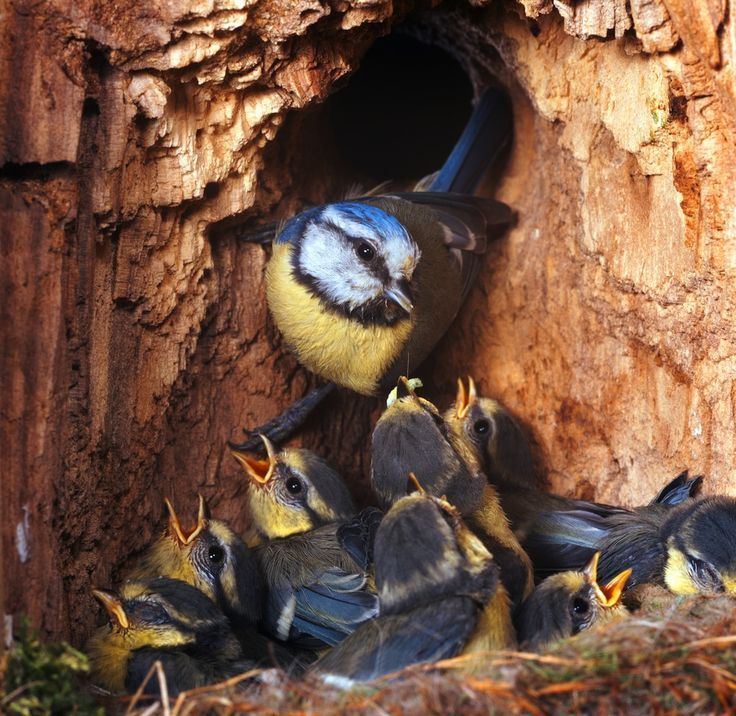 The trick to getting Bluebirds to start using the feeder is to leave the top open (and even remove the bars) temporarily until the birds "figure out" that there is food in there. Once they start coming regularly, replace the bars and close the top of the feeder. They should start entering through the ends or between the bars.
The trick to getting Bluebirds to start using the feeder is to leave the top open (and even remove the bars) temporarily until the birds "figure out" that there is food in there. Once they start coming regularly, replace the bars and close the top of the feeder. They should start entering through the ends or between the bars.
The Gilbertson Bluebird Feeder
This feeder is another variation of the Jail Feeder shown above. It is also designed mainly to limit the size of birds that can get to the mealworms or other food to Bluebird-sized birds or smaller. So, again, Starlings and Robins will not be able to access the feeding area.
The Gilbertson feeder was designed by Steve Gilbertson of Minnesota. It is a very simple-to-build feeder that almost anyone with basic woodworking skills can make. It is primarily composed of 2x4, 1x10, and 2x2 cedar. There is also some short lengths of 1/8" diameter metal rod which is installed horizontally. This can be found at most hardware stores or home centers.
This can be found at most hardware stores or home centers.
One of the bars is removable to allow access to the feeding area container. The plan calls for using an old aluminum or tin tuna fish can. You can also buy a small glass dish for this purpose. To download the plans for this feeder design, click below.
Gilbertson Feeder Plans
Bluebirds and Meal Worms
Watch this great video to see how attracted Bluebirds are to mealworms.
Bluebird Parental Care of Hatchlings, Nestlings, and Fledglings
Bluebird eggs hatch within a period between 24 to 50 hours. Chicks hatch blind and naked.
Both parents take care of the young and feed them with a diet rich in proteins, mostly insects.
Nestlings grow fast and leave the nest in about 16 to 25 days, depending on the region.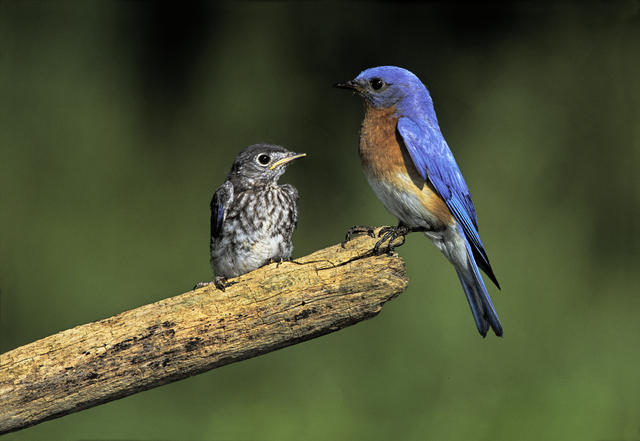 After they fledge, parents continue taking care of the fledglings for about three weeks until they become independent.
After they fledge, parents continue taking care of the fledglings for about three weeks until they become independent.
How long does it take for bluebird eggs to hatch?
The incubation period is variable within the Bluebird’s ranging between 11-19 days with an average of 13.5 days. Bluebirds in the warmer southern states have slightly shorter incubation periods than those in colder northern regions.
The female Bluebird starts incubating the eggs on the last or day before last she lays the last egg. She lays one egg every day but does not sit on them.
The female does all the incubation of the eggs. Once the egg hatch, she broods the nestlings continuously until approximately day 5-7 after hatching, when the nestlings begin to have some thermoregulatory control over their body temperature.
The male is always around, bringing food to the female while she incubates the eggs. Then, the male also brings food for the brooding female and the nestlings during the first days after hatching.
Egg hatching
Hatching begins 1 to 6 hours before the chick emerges completely from the egg.
The female incubates all the eggs for about the same period of time, ensuring that eggs hatch as close to each other as possible, eliminating the size advantage of chicks that hatch first over those that hatch last.
Blind and mostly naked.
Bluebird chicks at hatch are blind and mostly naked with patches of gray down. They weigh approximately 2.4 gr (0.08 oz).
Baby bluebirds are “altricial,” which means that nestlings are entirely dependent on their parents until they become nutritionally independent and can find food for themselves.
Both parents work equally to feed the chicks.
Both parents feed the chicks from day one, but the male does most of the work during the first five days after hatching. As in other birds, chicks open their mouth wide when they sense one of the parents in the cavity.
Studies of the breeding biology of nesting bluebirds indicate that both parents take about the same number of trips in and out of the cavity.
The same studies noted that the female alternates feeding with brooding the young birds during the first week as they cannot regulate their body temperature.
After a week, the young birds can regulate their body temperature, and the female does not have to brood them all the time, although she spends the night with them.
Parents appear to take more feeding trips and be more active during the early morning hours. The feeding continues in the afternoon but not as frequently as in the morning.
Foods fed to nestlings.
The parents bring crickets, spiders, grasshoppers, butterflies, and moth larvae, as well as berries such as raspberry, mulberry, dogwood, cherry, and honeysuckle.
The diet of nestling bluebirds is high in protein, consisting of approximately 68% invertebrates and 32% berries. A high protein diet helps chicks grow as fast as possible and leave the nest soon.
Photo: Festive Coquette/Flickr/CC by 2.0
Nest sanitation.
Four to 5 chicks defecating in a small cavity would make a big mess, but both parents clean up the cavity throughout the day.
As it occurs in many birds, right after chicks are fed, these turn around to present the parent with a fecal sack or pellet. The fecal material is encased in a bag-like gelatinous packet the parent takes with its beak and drops far outside the nest.
When the chicks are very young, parents will eat the fecal sacks, but this practice ends as the chicks get older and are fed various food items.
If one of the chicks dies, one of the parents, when possible, pulls it out of the cavity and drops it outside the nest.
How fast do nestling bluebirds grow?
Bluebird chicks develop fast. After hatching, young bluebirds begin making calls loud enough to be heard when parents arrive with food.
Photo: Putneypics/Flickr/CC by 2.0Feathers begin to grow and replace the gray down by day 2. The nestlings open their eyes by days 5 and 6. By day seven, the chicks have short feathers on most of the body’s back and sides. By day 13, chicks are completely feathered.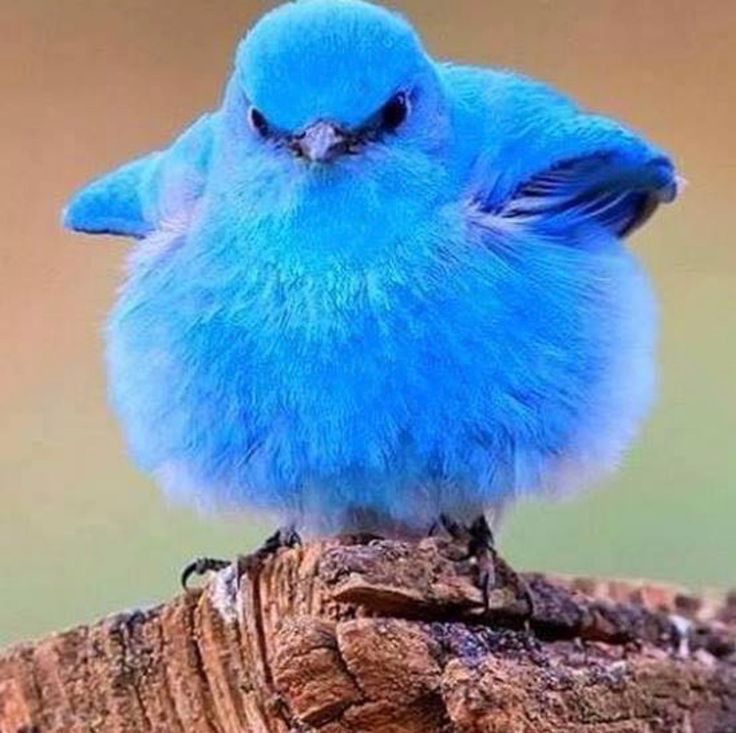
By day 13 and older, male and female young bluebirds can be told apart based on their plumage color.
Leaving the nest comes next.
As with the onset of the breeding season, the age at which chicks leave the nest varies with latitude.
Bluebirds in northern portions of the species range start nesting later, take slightly longer to hatch, and appear to take a little longer to leave the nest than birds in southern states.
However, the difference is small.
Across the species range, young Bluebirds leave the nest between 16 to 21 days after hatching.
Because all chicks hatch at about the same time, size differences among chicks seldom develop. Chicks of the same age and size leave the nest simultaneously.
Parental care after fledging.
Parents and young bluebirds stay together after fledging for about three weeks.
After leaving the nest, young Bluebirds remain in a relative hide for the first week or so. The parents bring food to the fledglings, which are easily located by their persistent calls.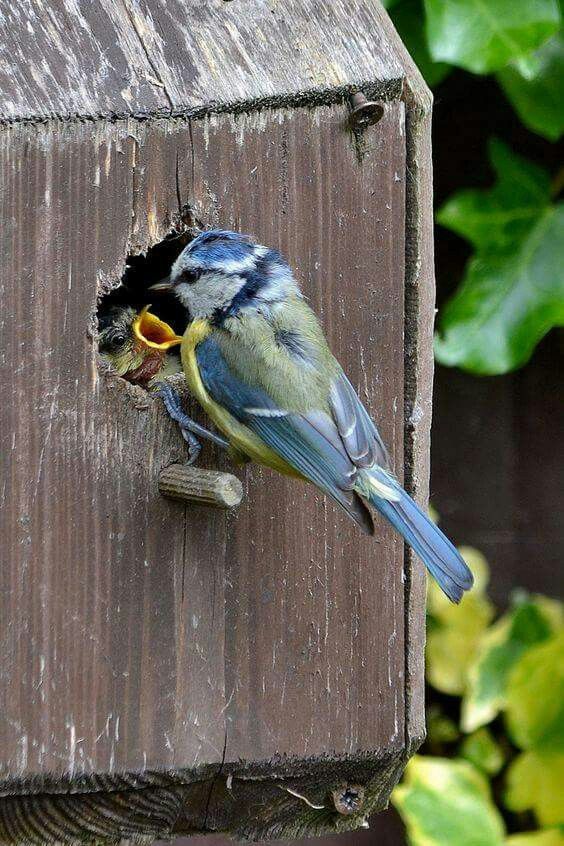
During the first week after leaving the nest, fledglings still depend entirely on their parents for food. They begin practicing flying from place to place.
After the first week, the young birds begin to follow the parents to more open spaces. The young Bluebirds also start performing the typical sit-wait-and-drop strategy to catch invertebrates.
As fledglings gain experience obtaining their food, the parents feed them less and less.
Once fledglings become nutritionally independent, they take trips further and further from the family unit after about three weeks.
Then, the young bluebirds join flocks of juvenile birds that move about in the region.
Field observations have noted that chicks hatched late in the summer may remain with the parents through the winter.
Overall, the time it takes for young Bluebirds to separate from their parents is variable.
Some fledglings stay in the family’s territory for a long time, while others join flocks of juvenile birds and leave the family unit in about three weeks.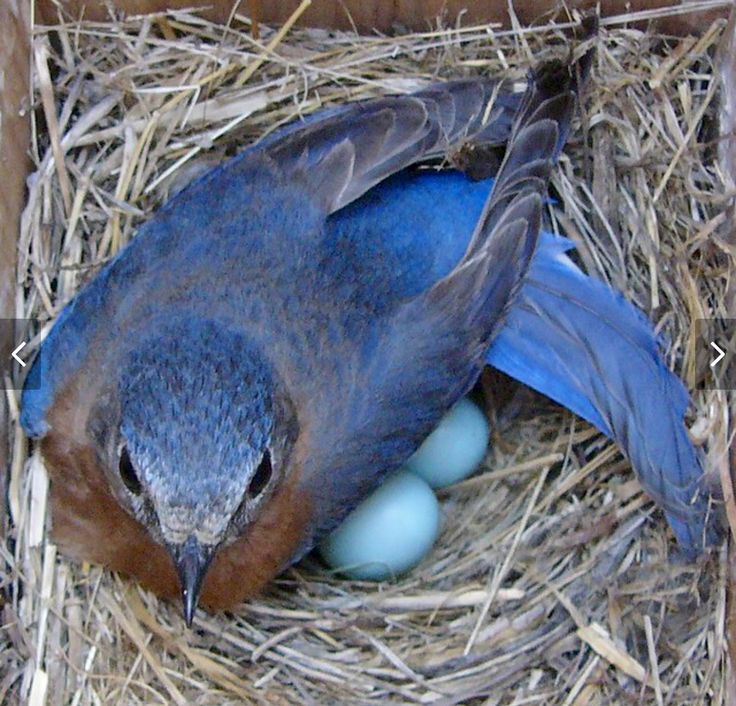
Photo: Wendy /Flickr/CC by 2.0
In the event that one of the parents dies, what will happen to the eggs or nestlings?
The effect on the eggs or nestlings varies depending on when and whether the male or the female goes missing. This is because the male does not incubate the eggs nor brood the young.
Disappearance when the pair has eggs in the nest
When one of the parent bluebirds dies or disappears during the egg-incubating period, the nest fails, and the remaining parent is likely to find a new mate and start another nesting attempt. Males do not incubate eggs, and the female cannot incubate, brood, and feed the young without the help of a male bringing food to the nest.
Disappearance when the pair has nestlings
When a parent dies or disappears when they have nestlings, the possible outcome depends on the age of the young bluebirds.
Generally, the remaining parent will try to get a replacement mate to help raise the brood.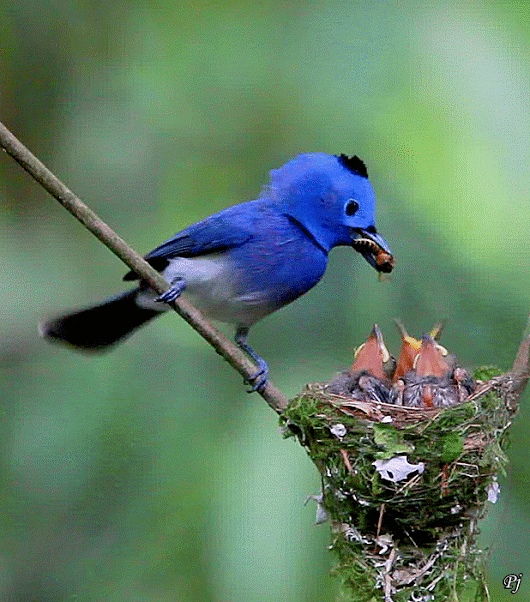
Possible outcomes include:
- If the female disappears when the nestlings are less than 7-8 days old, the nestlings are likely to die because they are unable to thermoregulate their body temperature. While the male will continue feeding them, he does brood them at all. If the female disappears after the 8-12 days, the nestlings do not need brooding, and the male alone is likely to raise the brood on his own.
- If the male disappears when the nestlings are less than 7-8 days old or older, the female may be able to raise them alone, although she could fail.
Both the widowed male or female can enlist the help of a new partner that helps them raise the young. The new partner’s interest is acquiring a territory and having the next brood as a parent. New partners that begin as helpers do help but not as energetically as if they were the real parents of the brood.
Helping a widow raise his/her young is a way for “floaters” to acquire a territory. A floater is an adult bluebird ready to breed but does not have a mate or territory.

Older siblings may help parents raise the new brood
Another observation of these studies was that young birds of the previous brood, still in the parents’ territory, may help feed their younger siblings.
This behavior appears not to be common and happens more often in certain habitat types and conditions than in others. The actual help older fledglings provide is also in doubt. It may be that young birds do this as a manner of practicing for when they become parents.
If one of the parents disappears and older fledglings are around, they are likely to help raise their younger siblings.
References:
- Eastern Bluebird, Life History. All About Birds. The Cornell Lab of Ornithology.
- Gill, Frank (1995). Ornithology. New York: W.H. Freeman.
- Sialis Online. Bluebirds.
- The Birds of the World Online. Eastern Bluebird (Sialia sialis). Cornell Lab of Ornithology, Ithaca, New York.
LEARN MORE:
What to feed a magpie in captivity.
 Animal feed, vegetables, fruits
Animal feed, vegetables, fruits Contents
Feeding magpies in captivity is based on the general principles of feeding corvids, which can be read in a separate article "Feeding Corvids". Long-term observations of keeping these corvids in captivity inspired me to write a separate article on feeding magpies.
author of the title photo of the magpie Vasily Kalinin
Few people think about how easy it is to provide the magpie with everything necessary in captivity. As a result, there is a picture of the survival of these beautiful birds in the hands of the owners, lisping sick birds.
In this article I would like to draw the attention of corvid lovers to the fact that magpie is an active predator and gatherer. It feeds on everything it can get - from berries to fairly large animals and birds, as well as carrion.
This is true both for the nominal species Common magpie ( Pica pica ) with all subspecies, and for blue magpie ( Cyanopica cyanus ) and ecotic magpies, for example - Thick-billed azure 0009 (Urocissa caerulea ).
Feeding magpies is different from feeding adult birds, so if you picked up a magpie chick, then detailed information on how to feed the chicks is given in this article: "Feeding magpie chicks, crows, jays, jackdaws, rooks, ravens, chicks."
So, what should be in the diet of forty?
The diet of forty must include
insects .Mealworm, zofobas, crickets, grasshoppers, bears, etc.
Forage insects should be bred on a variety of nutritional diets, then their nutritional value will be high. Zofobas and flour worm, grown on poor diets, is rich in fats and poor in mineral composition and vitamins. Feeding forty only with such “fatty” feeds will lead to the development of pathologies of the liver and kidneys of the bird.
During the period of mass departure of the May beetle (beetle) ( Melolontha melolontha ) it should be given to magpies without restrictions. At this time, it can be stored by freezing.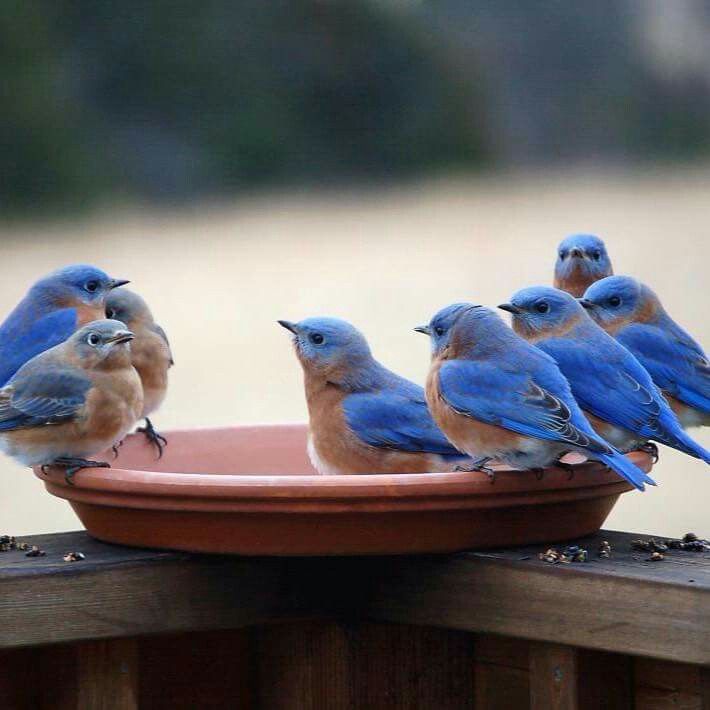 Although, often, the birds quickly gorge themselves on the May beetle, especially defrosted, and refuse to eat it - in this case, you need to take breaks with his dacha.
Although, often, the birds quickly gorge themselves on the May beetle, especially defrosted, and refuse to eat it - in this case, you need to take breaks with his dacha.
Magpie eats "ant eggs" - ant pupae. Ant egg is very rich in nutrients, but I would not recommend introducing it into the diet of magpies on an ongoing basis - since collecting an ant egg causes great harm to anthills and, accordingly, to the forest ecosystem.
In this video, a magpie is eating a thrush. Perhaps this magpie found a thrush that had already crashed, maybe she caught it herself. Magpies are able to catch both adult birds and fledglings of sparrows, tits, and pigeons.
At home, magpies must be constantly provided with small fodder birds.
The best option is quail carcasses. You can buy gutted quails in supermarkets or you can order quails at forage farms. It is preferable to feed magpies with quails rather than chickens, since it is important that magpies receive full-fledged small bird bones rich in calcium.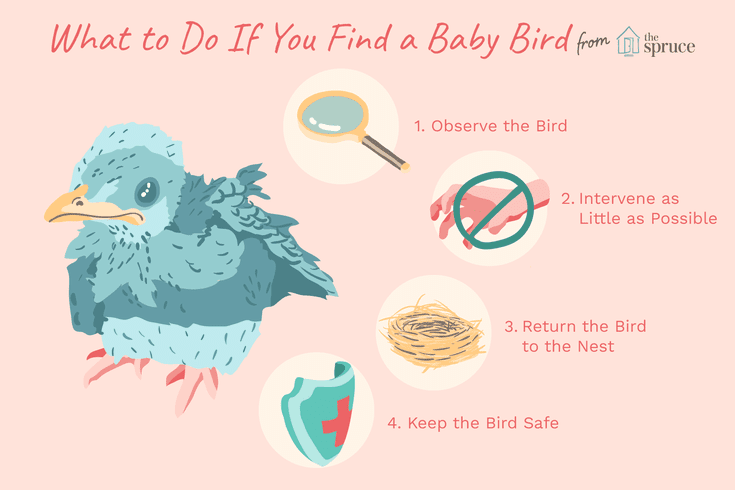 Chickens contain a lot of phosphorus, but little calcium.
Chickens contain a lot of phosphorus, but little calcium.
It is not recommended to feed forty meat to broiler chickens - as such chickens are raised with various biological additives that accelerate the development of muscle tissue and these compounds are stored in raw meat. Forty such additives are not at all useful.
Common magpie preys on a rabbit. Here you can see how magpies act as regulators of the number of small animals in cities. When the populations of natural predators (wolves, foxes, dogs) decrease, small animals, in particular rabbits, actively breed.
A magpie hunts a rat. This video is specially added for those who like to blame forty in various sins and destroy them. Magpies are an important regulator of the number of rodents in cities.
Magpie hunting mice. A similar video, only here the moment of the magpie hunting for mice is captured.
Magpies at home should regularly receive small rodents.
This is critical for mineral metabolism.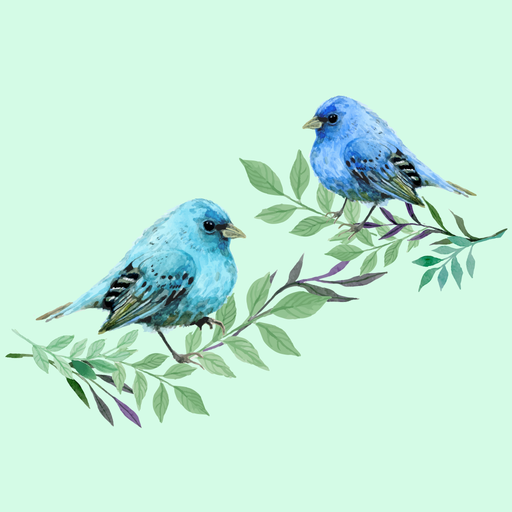 In magpies, it is very intense and the lack of readily available calcium in the diet quickly leads to problems with the bone tissue of birds and with the work of the heart muscle. In addition, it is important not to forget that the mechanism of pellet formation for corvids is as important as for birds of prey and owls.
In magpies, it is very intense and the lack of readily available calcium in the diet quickly leads to problems with the bone tissue of birds and with the work of the heart muscle. In addition, it is important not to forget that the mechanism of pellet formation for corvids is as important as for birds of prey and owls.
Nude (nude) mice are not recommended in large quantities, as they contain a large amount of phosphorus and a small amount of calcium. This will lead to calcium deficiency in the body of the bird and the development of serious problems.
A clip about the diet of blue magpies, if you remove the sound, it shows a variety of insects eaten by magpies. You can clearly see how healthy blue magpies look and how they move.
It may seem strange from the outside, but a huge problem for corvid lovers, as well as parrot lovers, is that people do not know what healthy birds of the species that they keep at home look like. Hence a large number of chronically ill birds that have not been dealt with for years.
Magpies prey on patterned snake ( Elaphe dione ). Although most likely, this video captures the moment of guarding the nesting area of Magpies.
Common magpie caught a snake.
Thick-billed azure magpie ( Urocissa caerulea ) hunts a snake. I don't know the type of snake. I believe that in this case, the moment of protection of the nesting site of magpies was captured on video. Snakes and lizards are part of the regular diet of these corvids.
Should lizards and snakes be given to magpies? Where can I get them other than to withdraw from nature? Unless you accidentally stumble upon a snake-snake or a lizard, just crushed on a country road by a car. As a treat, it is a good addition to the diet of captive magpies. Catching reptiles specifically to feed the corvid that you have removed from nature, in my opinion, is ethically wrong and biologically criminal.
Blue magpies feed on privet berries.
All magpies should be given the maximum variety of berries available in your area.
Berries should be given both fresh and dried and frozen. Fruit should also always be present in the diets of forty.
Magpies feed on a fallen hare. Rabbit carcasses can be bought in supermarkets or from farmers. It is desirable to give them not gutted. For magpies, like any other corvids, it is very important to “load” the beak correctly so that it does not outgrow.
If you are a completely “correct” naturalist, then having a magpie, most likely you will bring home downed cats, pigeons, etc. I absolutely do not recommend doing this! since rabies, different strains of influenza, tuberculosis and many other dangerous infections are not an invention of doctors and laboratories, but a real danger to your health.
A very important point, which is overlooked and not discussed with disgust by city lovers of corvids — magpies, ravens, ravens are natural orderlies of ecotopes. An important part of their diets is made up of dead animals. Moreover, it is also important that by eating carrion, magpies get a large amount of fermented adipose and muscle tissue. These compounds cannot be replaced with artificial additives in the diet of birds, but you can not throw out the uneaten remains of mice, rats, quails from the aviary or bird room - leave them for several days in a cage or in a “stash” with a magpie.
An important part of their diets is made up of dead animals. Moreover, it is also important that by eating carrion, magpies get a large amount of fermented adipose and muscle tissue. These compounds cannot be replaced with artificial additives in the diet of birds, but you can not throw out the uneaten remains of mice, rats, quails from the aviary or bird room - leave them for several days in a cage or in a “stash” with a magpie.
I think that all owners of corvids understand well what a "stash" is) - these are products that turn out to be hidden in the most unexpected places. It’s good when it’s a nut, an acorn or a harmless quail egg, worse when it’s a fish head or a rat carcass hidden in a jeans pocket). If the aviary is outdoors, this is not a big problem, but at home it is more difficult. The long tubular bones of animals are well suited for such “feeding” - the magpie will be long and happy to hammer the odorous bone.
During the ripening season of nuts, acorns, chestnuts - these products are actively eaten and stored by magpies. Don't forget to provide them for your birds. This is a very good natural beak grinder.
Don't forget to provide them for your birds. This is a very good natural beak grinder.
I remind you that clay is just as important for corvids as it is for all other birds. Magpies should always have access to clay, you'd be surprised how much they eat. You can read more in the article: Clay in the diets of birds.
Conclusion, the diet of forty must necessarily include:
Insects:
mealworm, zofobas, crickets, grasshoppers, cockchafer and other available insects.
Animal carcasses:
quails, rats, mice, rabbits.
"Fermented protein"
rotten remains of feed animals or tubular bones of cattle and small cattle.
Nuts, acorns, chestnuts.
Berries. Fruits. Vegetables
Clay.
Questions - Answers about feeding forty.
V. — can magpies have mushrooms? And if possible, which ones? I gave my magpie sulfur-yellow tinder fungus, white, boletus, chanterelles in small quantities, there were no problems, but suddenly.
O. - you can. Everything edible for humans is definitely possible. All the rest are questionable, not everything that is dangerous for mammals is dangerous for birds. But I myself cannot yet say which inedible mushrooms are needed and safe for birds, I have little information about this at the moment.
Blue magpies feed on ripe persimmons.
Q. — I give chicken meat-liver-ventricles-hearts-heads-paws, but I buy only domestic chickens. By the way, when I give the whole fish, the brain and eyes are also eaten at once. Shrimp eat it too.
The article has not yet said about cottage cheese in the diet, but, probably, this is because it is mentioned in other articles.) Well, about eggs. I give boiled chicken (together with the shell), and raw quail (also with the shell).
Is lean beef good for a magpie? I trim the fat. Another beef heart is quickly eaten.
A. - it's very good that you feed your magpie so varied. I did not focus on fish / meat / eggs in this article - since the basis of the magpie diet is common to all corvids. This is described in detail in the article - Nutrition of corvids. There is a discussion of the fat content of cottage cheese in the diets of corvids in the article: “What cottage cheese should be given to corvids, fat-free or normal?” Lean beef, suitable - better on the bones - for the bird to apply force in the process of eating. Beef heart is very useful for all corvids.
I did not focus on fish / meat / eggs in this article - since the basis of the magpie diet is common to all corvids. This is described in detail in the article - Nutrition of corvids. There is a discussion of the fat content of cottage cheese in the diets of corvids in the article: “What cottage cheese should be given to corvids, fat-free or normal?” Lean beef, suitable - better on the bones - for the bird to apply force in the process of eating. Beef heart is very useful for all corvids.
Q. - I would also add shellfish to the article, especially snails, which in nature make up a significant part of the diet of magpies. They eat large quantities of both slugs and snails along with shells. Empty shells are also willingly eaten and played with.
Another question about chicken heads: can I give or not? I give periodically - it is eaten completely, with the exception of the beak. Moreover, they usually immediately eat out the eyes, and then give the head a couple of days to lie down, only after that they eat it.
A. - shellfish and snails are a good source of protein and calcium, but for domestic corvids I would not recommend using "wild" snails. Mollusks are a natural "reservoir" and intermediate hosts of a large number of helminths and protozoan parasites of birds. Therefore, is better to use adjustable snails.
Chicken heads - the same trouble with them as with chickens in general - if these are chickens from your farm - everything is ok. If broilers, I would not recommend using them for feeding corvids and birds of prey.
As a reminder: a course of anthelmintics is recommended for all corvids twice a year. Late autumn and early summer.
Questions were asked by: Golub Obivanov, Lida Danish , Ekaterina Shamrock ,
As usual, I will be glad to any additions, comments, discussions.
Hatchling
Keywords: Hatchling
Breeding of chicks - the maximum full-fledged and viable offspring - is the main task in the survival program of any species. The nature of embryonic development is the same for different species of birds, but differs due to a number of factors in duration. One of the most important differences is the degree of maturity of the chicks that hatch from the eggs. The incubation time of the clutch and the type of maturity of the chicks depend on this indicator.
The nature of embryonic development is the same for different species of birds, but differs due to a number of factors in duration. One of the most important differences is the degree of maturity of the chicks that hatch from the eggs. The incubation time of the clutch and the type of maturity of the chicks depend on this indicator.
In passerines, parrots, cuckoos and birds of some other orders, the chicks hatch the least developed. This means that the chicks hatch naked, blind and helpless. This type of maturity is called chick . For successful hatching of , these chicks need a reliable, protected nest and long-term care and feeding from their parents. Incubation periods for such species are from 14-16 to 18-20 days.
In owls, birds of prey and penguins, the chicks hatch more developed, that is, they have thick down and can see. It's half-brood or half-brood maturity type. On the part of their parents, they need food and heating. Hatching periods for such species range from 25-30 days to 60 or more days for large penguins.
Hatching periods for such species range from 25-30 days to 60 or more days for large penguins.
Galliformes, ostriches, anseriformes, waders, cranes and several other species are characterized by hatching of chicks, which are able to be relatively independent already a few hours after birth. This type of maturity is called brood . Such chicks are fully developed, they see, and a few hours after birth they are able to follow their parents and feed on their own. Such families leave the nest almost immediately. For a very short time, the chicks need help in the form of warmth and tips to find food. This is important due to ground nesting conditions where too many factors threaten the safety of the offspring. Weed chicken chicks don't know their parents. After they get out of the incubator, they immediately begin an independent life.
The general trend of hatching of chicks is such that small birds sit on clutches less, and large ones longer. Small representatives of chicken and waders incubate eggs for 14-16 days, medium-sized birds - chickens, pheasants - 21-24 days, and turkeys and peacocks - about 30 days.
Small representatives of chicken and waders incubate eggs for 14-16 days, medium-sized birds - chickens, pheasants - 21-24 days, and turkeys and peacocks - about 30 days.
The rate of embryonic development also depends on the incubation temperature. The optimal temperature for the functioning of a living protein is 37ºС. An increase or decrease in this temperature level affects the development, it accelerates or slows down, respectively. Under natural conditions, the hen regulates the temperature of the masonry with the help of the brood spot. This is the area on the ventral part of the bird's body where the feathers are plucked or fall out during the incubation period. A dense network of blood vessels located in this place, capable of providing increased blood flow, due to which the temperature rises. The mother hen regulates the temperature of the masonry by receiving and processing information from the nerve endings located in this area. She can either raise her body temperature or lower the temperature in the nest by standing over it and allowing cooler air to enter the masonry.




